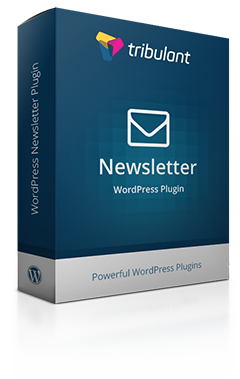Checkout Config: Product Page Settings
Checkout > Configuration > Product Page Settings
NOTE: The screenshots on this post have been taken from one section in the configuration. It has been split up for convenience and so that it is easier to follow. The settings in the screenshot are explained below the relevant screenshot.

1. Default Product Type
This setting controls the selected option when in the “Save a Product” section. By default it is set to “Digital” but most people sell physical goods and may wish to default the selection to “Tangible” for ease of use.
2. Show Categories
Setting this to “Yes” will show the categories that the product is part of. This is done per product on all your product pages, it simple displays the categories as comma separated links. Setting to “No” hides this.
3. Show Keywords
Setting this to “Yes” will show the keywords that have been assigned to the product. This is done per product on all your product pages, it simple displays the keywords as comma separated links. Setting to “No” hides this.
4. Description Position
You have the choice to either have the description above or below fields and “Add to Basket” button. Simply click the radio button which better suits your needs.
5. Description in Tab
With content areas available on a product and this setting turned on, the main description will be displayed in the first tab. If the setting is not selected, the description will show outside the tabs.
6. Show Specifications
If you have set product weight and dimensions on your products, then setting this setting to “Yes” will display these values on the product pages. These are simply listed one below the other with the relevant values and units as configured.
7. Display “How Many”
This is set to “Yes” by default. It allows you to toggle the quantity field on/off on the product page. If you have determined a system for pricing using Variations & Options then it may be better to turn this off (set to “No“).
8. Show Inventory/Stock
This will show If there is any stock available for the product. This is displayed next to the “How Many” field documented above. It simply outputs the stock value that is input when creating/editing the product.
9. Show Button/Text Link
This affects the “Add to Cart” functionality on product pages.It is set to “Button” by default. Changing the setting to “Text Link” will display a hyperlink instead.
10. Button/Link Text
This is set as “Add to Basket” by default. You can change the wording to customize the label on the Button or Text Link. This only affects the text on the product pages.
11. Zero Price Text
The default is set as ‘Configure for Price‘ This is text that will display to your user if a product has a zero price.
A zero price on a product is useful if you want the product’s price to be determined by selections of custom fields and/or product variation options attached to the product. Once a variation option or custom field is selected then the text here will change to “Calculating…” until it displays the product price.

12. Related Products in Tab
This is set to “No” by default. If set to “Yes” related products will be displayed in a tab, else they will be displayed in the infoholder as explained at option number 2. This is then further affected by option number 5.
13. Related Products Layout
This is set to “Grid View” by default. It defines how related products will be displayed to the user on the front end. As an alternative this can be changed to “List View“. Related products are displayed at the bottom of product posts/pages, essentially in the same style as the product loop.
14. Show Fields in Tab
This is set to “No” by default. If you use Custom Fields or Variations & Options for a product, setting this to yes will display these options in a Tab on the Product Page. This only displays custom fields and variation options in a tab if content tabs are available.
15. Image Display
Here you have the option of letting your images been shown as Full Images or Thumbnail Images. In order to use the Zoom Gallery or to have images enlarge in a pop-up on click, then the Thumbnail option must be chosen. Else products images will be shown the full size of the image uploaded on the product. This may cause display issues if you image dimensions are too large to fit into the post/page.
16. Universal Text Box
This is set to “No” by default. Upon selecting “Yes” several more options appear which affect how and where the universal message is displayed. The universal message is simply text which is displayed on ALL product pages, useful for mentioning special shipping conditions or a slogan or similar.
17. Thumbnail Dimensions
You can specify the width and height (dimensions) of the main product image that show on the product pages. Note that leaving either of the 2 fields blank will then proportionally resize the thumbnail based on the dimensions of the original image uploaded.
18. Extra Images
Here you can change the dimensions of the thumbnails that will be displayed for the Additional Product Images which were uploaded when creating/editing the product. These thumbnails appear one next the other below the main product image. On click they are enlarged in a pop-up window or they are loaded into the main image space to be used with the Zoom Gallery extension.
19. Thumbnail Quality
Here you can decide on the quality of your thumbnails. If you have a lot of thumbnails loading on your product pages it might be a good idea to reduce the thumbnail quality so the page loads quicker. Note this does not affect the enlarged/zoomed image.

19. No Image Display
If you don’t have any images on a product, should it display nothing or a no image placeholder.
20. No Image URL
This URL by default is set to the “No Image Placeholder” image that is uploaded when the plugin is installed. You can select your own image as a replacement by specifying the URL accordingly. Do NOT leave this field Blank!
21. Show Sharing Buttons
Set this option to “Yes” if you would like sharing buttons such as Facebook, Twitter, Google, etc to be shown at the bottom of your product post/page.
Website & Email Hosting
Get the best website & email hosting for speed, security, and peace of mind. No restrictions. Freedom to do what you need in order to run your business.

